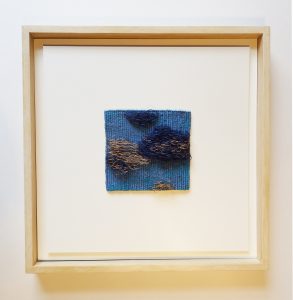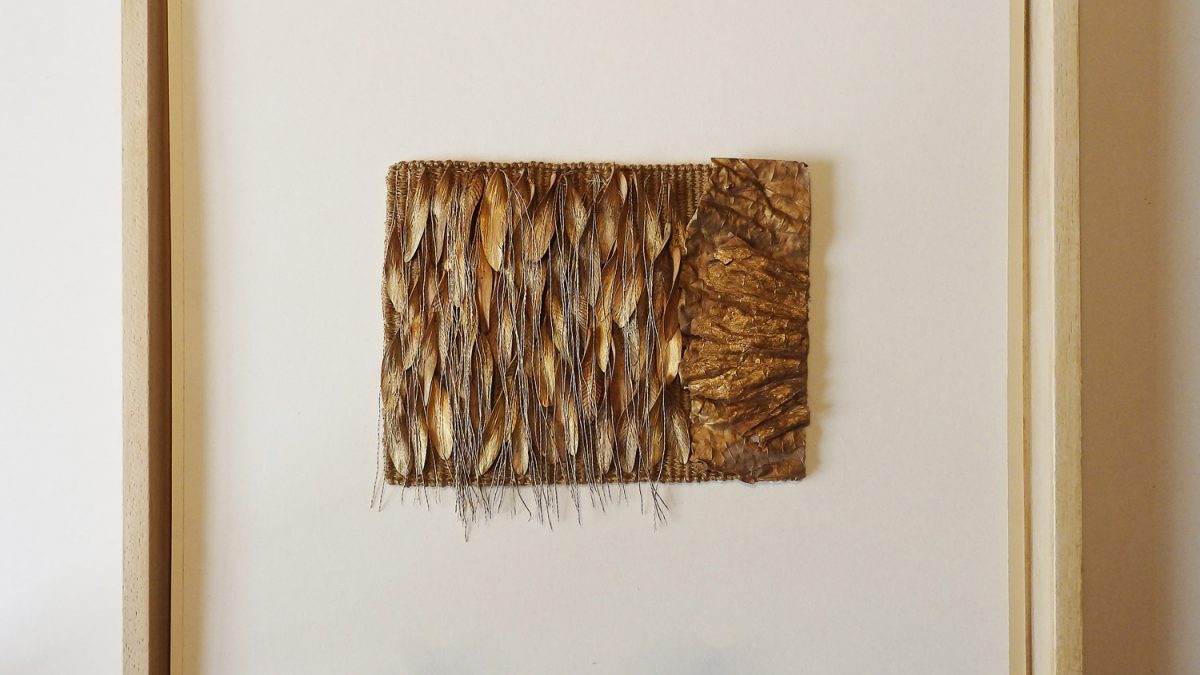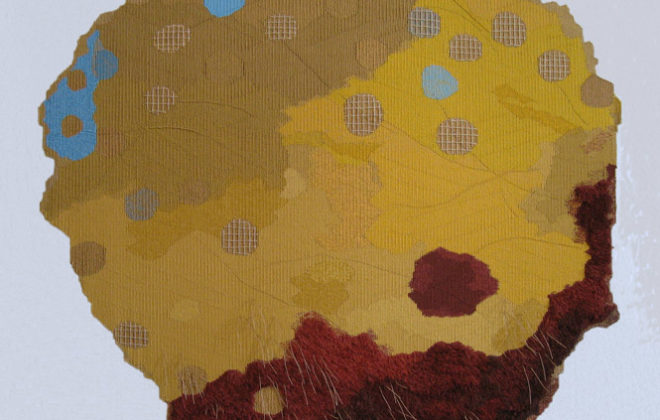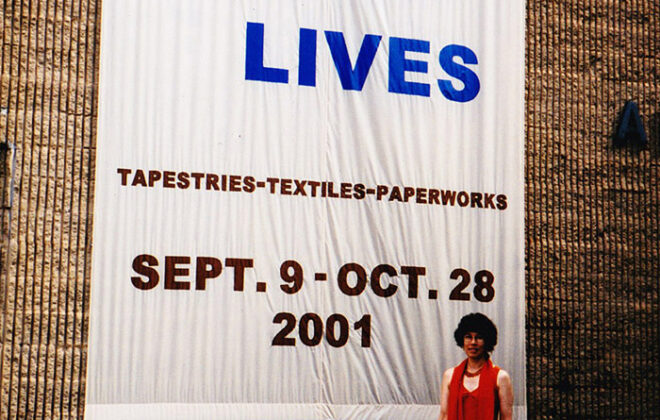How do you frame a tapestry?

Almost any artist will tell you that presentation is at least as important as the work itself. Sloppy framing or poor attention to detail suggest lack of confidence in the work or lack of commitment to it. Small tapestries also present their additional problems. There are numerous options for how they can be hung.
Larger tapestries hang under their own weight, but miniatures need at least a hard backing. Then do you want a glass or Plexiglas cover to protect them, or is it better from viewers to see the piece without a barrier? Plexiglas boxes are relatively unobtrusive, but can get easily scratched or broken, especially in transit.

For my upcoming show in May (more in blogs later), I have chosen minimal wood framing without glazing. For the background, I chose an off-white matte, but I didn’t want to go for the window mount that is often used for prints. I thought the miniature tapestries should come forward rather than recede, since they have texture which often forms a bas relief. So there are two layers of mounting card under the tapestries, one slightly smaller than the other, and the wood lends a slight warmth.
All of this might sound uninteresting, but the object is really that the viewer almost doesn’t see the presentation, so that they focus on the work. As the actor Michael Caine once said, ‘If people think, isn’t he a good actor, then I have failed.’
Since there will be about twelve of these miniatures in the show, it is also important that the framing is uniform.
Historically paintings often had elaborate, gold-encrusted frames to emphasise the value of the piece. Today’s framers would be unlikely to go down that route. The work should announce its value without the overegging of the pudding.
The framing should hold the mini-tapestry in a way that makes it look a bit like a jewel, something special. In the same way that the setting for a diamond should not overpower the brilliance of the stone, so the frame needs to sit back in a supporting role, both literally and figuratively.





